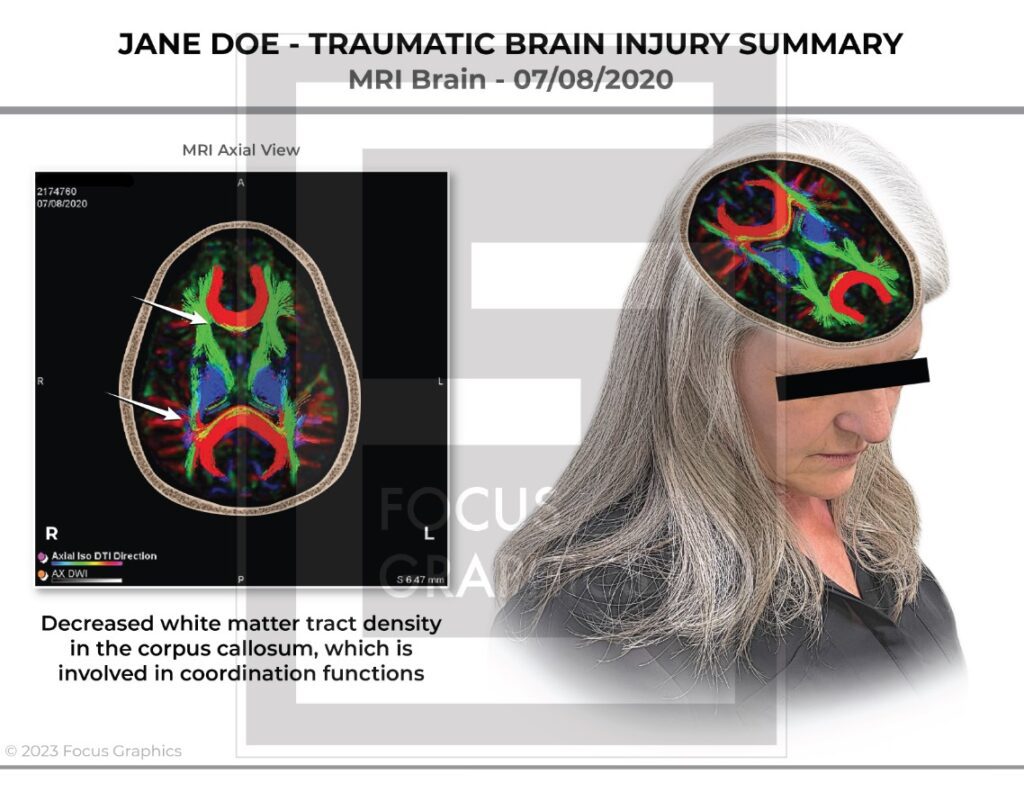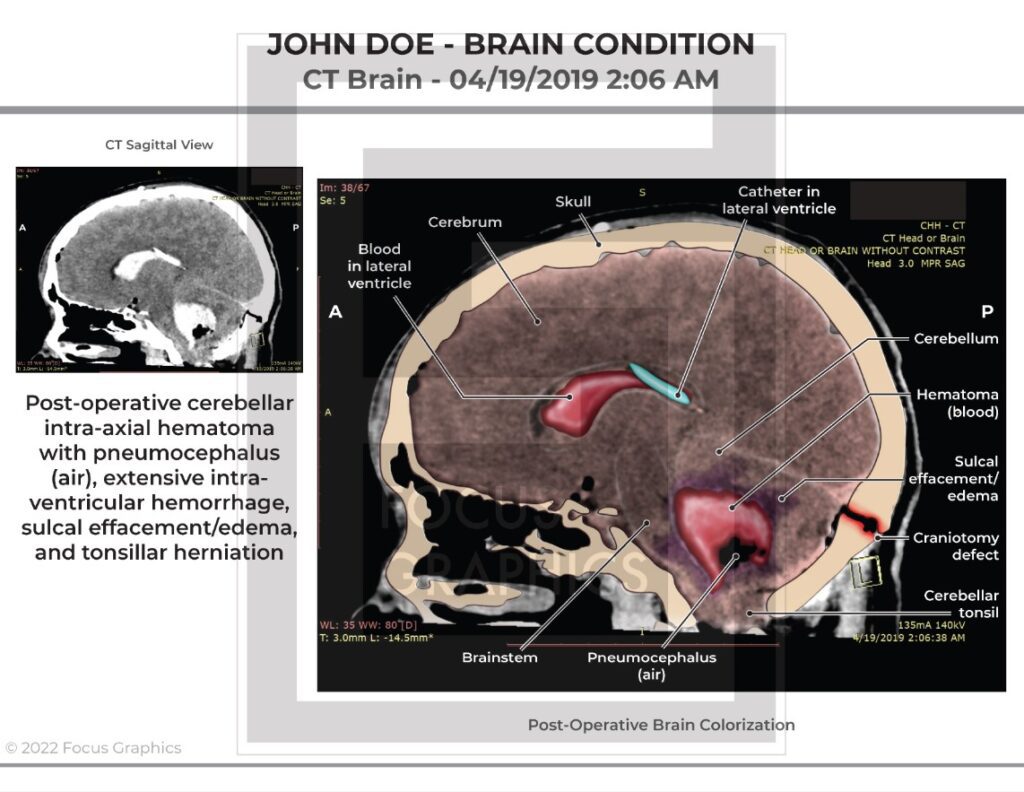TBI Essentials
We all know traumatic brain injury cases are often the most valuable cases we will have at our firms. It is also a fact that many of our traumatic brain injury cases are not the type that are obvious on first blush. So how do we prove our traumatic brain injury cases? The first thing we need is solid expert witnesses, treating doctors, or best case scenario, both. Once you have your experts, you will need to have the demonstrative exhibits for them to use during trial to make the brain injury easy to understand. There are many demonstratives at your disposal including, but not limited to, brain injury summary illustrations, colorizations of imaging, brain slicers, brain deficit animations, and medical condition animations.
Our firm handles brain injury cases on a regular basis. Some of the brain injuries are catastrophic, while others are subtle. For catastrophic brain injuries, your clients are typically outwardly impaired and you will need to show how the brain injury impacts them and why they are the way they are post-injury. For example, if you have a client who has suffered a hypoxic brain injury, you will see classic signs on brain imaging. These changes are not easy to understand by looking at a brain MRI; however, when the brain MRI is colorized and it shows the area of the brain that has been damaged with an explanation of what that part of the brain controls, it makes it easy for the jury to understand the injury. One of the tricks the defense likes to use is picking certain slices of the brain MRI that looks normal and suggesting that the MRI is “grossly normal.” This can easily be debunked by having your neuroradiologist work with you to pick the slices of the brain MRI that show the damage. Focus Graphics does an amazing job utilizing their brain slicer technology to show the jury exactly where in the brain the damage is located and how that damage impacts your client. The brain slicer technology allows your neuroradiologist to show the jury that he is the expert to be trusted in trial, and you can use the brain slicer on cross examination of the defense-paid witness to prove they were trying to fool the jury by picking a slice of the brain MRI that was intentionally picked to suggest your client is fine when, in fact, they are not. This is insanely powerful because your expert obtains credibility and you crush the defense expert all with one demonstrative.




For your clients who have suffered more subtle brain injuries, it is even more important to ensure you have powerful demonstrative exhibits to use with your experts. I had a case where a client slipped and fell, and while she did not hit her head, she did suffer a coup contrecoup injury due to her head whipping back so intensely. We had to show how the brain injury could occur without her striking her head. We had video surveillance showing the fall, but the video was very grainy and, as a result, we turned to Focus Graphics to help us make the video more simple for the jury to understand. They were able to show the actual video of the fall and then go into a 3D animation of our client’s fall and how her brain moved in her skull, causing the injury (see the coup contrecoup example in the video above). Being able to show the damage to the brain was extremely powerful. When we played the animation for the defense in a mediation presentation and they saw how we were going to prove the damage to our client’s brain, the defense caved and we were able to increase the offer from $100,000 to a significant close-to-seven figure settlement.
Without effective visuals to support your expert’s testimony, your jury may be confused by the defense’s testimony and doubt your client’s injury. Your brain injury cases are worth millions of dollars, so invest in them with your experts and your demonstrative exhibits.
By Sean Claggett
Sean Claggett, founding partner of Claggett & Sykes Law Firm, is one of the most successful trial attorneys in the country. A 2003 graduate of UNLV’s William S. Boyd School of Law, Sean was honored as Alumni of the Year by the Boyd School of Law in 2010; has been recognized by Legal Aid of Southern Nevada for his Pro Bono work; and was selected by his peers as Nevada Trial Lawyer of the Year in 2017. Sean was also named to Courtroom View Network’s 2020 “Who We’re Watching” list and currently serves as an adjunct professor in Law Practice Management at UNLV Boyd School of Law. He is frequently sought after to consult or join as co-counsel on cases proceeding to trial due to his extensive experience and success at trial.
READY TO FIND OUT MORE?
Our team of animators, illustrators and medical professionals are ready to make your demonstratives ready for your next mediation or litigation. Request a quote or give us a call at (702) 849-0090.

